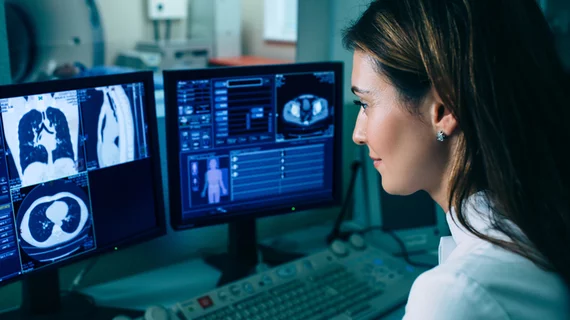Transitioning from medical training to life as a radiology resident is difficult and often daunting. But a little guidance can help young rads gain a leg up during this crucial time.
“One of the major reasons why new radiology residents struggle in this transition is lack of exposure to the daily life and expectations of radiologists during medical school,” Kirang Patel, MD, and Amy Patel, MD, both with the University of Missouri at Kansas City, wrote Saturday. “Even as medical students or interns on their radiology rotations, they are mostly shadowing, without ever having used a dictation system or answering phone calls for protocoling studies.”
The pair shared their six tips for new radiology residents in a new JACR column.
1. Study up
Reading imaging textbooks and articles is crucial, and many suggest investing 1-2 hours of studying each day to prepare for the Core Exam. The duo also advises picking up as many complex studies and cases as possible.
“The more repetition there is by reading material, picking up studies, and taking cases, the more successful a resident will be,” the authors explained.
2. Find your pattern
Developing a consistent search pattern while reading studies boosts residents’ efficiency and decreases perception errors.
New residents should also make a habit of looking over prior imaging, reports, clinical histories and lab values. Training dictation systems to improve speech recognition and using keyboard shortcuts can greatly enhance daily workflow.
3). Be mindful of burnout
Radiologists suffer burnout at higher rates than other specialists, with some figures estimating 61% experience such symptoms. Understanding this fact is crucial, the authors noted.
Free resources, such as the American College of Radiology’s Wellbeing Program, can help balance residents’ personal and professional life.
4. Financial planning matters
Most medical students in the U.S. graduate with debt, which also adds to burnout. A successful career requires understanding finances and taking advantage of related resources.
5. Connect with colleagues
Making connections with fellow residents will help with future fellowship and job opportunities. Residents should consider joining organizations, such as the ACR and RSNA, and volunteering within other radiology groups.
Working with mentors can help make radiology a more fulfilling career and aid residents in achieving loftier goals, the pair wrote.
6. Think about the future
During rotations and overnight shifts, residents should think about which subspecialty they may want to pursue. Working these rounds can also help identify weaknesses for later improvement.
“The beauty of radiology is how vast the options are, so thinking about what practice types or procedures are of most interest can help guide the types of projects and connections a resident may potentially make,” the authors wrote.
Read the full piece here.

